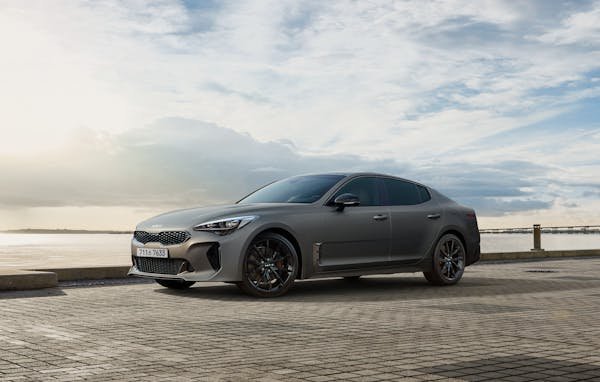When you’re in the market for a new car, one of the first things you encounter are the technical details known as car specifications. While these can seem overwhelming at first glance, they are crucial in helping you choose a car that fits your needs, lifestyle, and budget. In this guide, we’ll break down what car specifications actually mean and how they impact your buying decision.
What Are Car Specifications?
Car specifications (or car specs) are the detailed attributes that describe a vehicle’s mechanical setup, dimensions, performance capabilities, safety features, fuel efficiency, and more. They allow buyers to compare different models and make informed choices.
1. Engine and Performance
One of the most important car specifications is the engine. Here’s what you need to know:
-
Engine Displacement (cc or Liters): This refers to the size of the engine. Generally, a larger engine offers more power but may consume more fuel.
-
Horsepower (HP): The power your engine produces. A higher horsepower means quicker acceleration and higher top speeds.
-
Torque (Nm): This is the force that helps your car move. More torque usually equals better towing capacity and quick pick-up.
-
Number of Cylinders: More cylinders usually mean smoother performance and more power.
Example: A car with a 1.2L, 4-cylinder engine producing 90HP and 110Nm torque is considered fuel-efficient and suitable for city driving.
2. Transmission Type
The transmission decides how the car shifts gears:
-
Manual Transmission (MT): Offers full control and slightly better fuel efficiency.
-
Automatic Transmission (AT): Easier to use, especially in traffic, but sometimes less fuel-efficient.
-
CVT (Continuously Variable Transmission): Smooth and efficient, best for daily commuting.
-
Dual-Clutch Transmission (DCT): Offers fast gear changes, ideal for sporty driving.
3. Fuel Efficiency (Mileage)
One of the most searched-for specs is fuel efficiency, usually measured in kilometers per liter (km/l):
-
Petrol cars generally offer 12–18 km/l.
-
Diesel cars give 18–24 km/l.
-
Hybrids and EVs often exceed 25 km/l or offer longer electric-only ranges.
Always check for both ARAI-certified mileage and real-world mileage figures.
4. Dimensions and Space
Knowing a car’s size helps determine parking, maneuverability, and interior space:
-
Length, Width, Height: Longer cars may have bigger boots or more legroom, but can be tougher to park.
-
Wheelbase: Longer wheelbases generally mean more cabin space and better stability.
-
Ground Clearance: Important for rough roads or speed bumps—180mm is average for Indian roads.
-
Boot Space: Measured in liters, it affects luggage-carrying capacity.
5. Suspension and Ride Quality
Suspension affects comfort and control:
-
MacPherson Strut and Torsion Beam: Common in compact cars for daily drives.
-
Multi-link Suspension: Found in premium cars and SUVs for smoother rides.
-
A good suspension setup absorbs bumps and keeps the car balanced at high speeds.
6. Braking and Safety Features
Always prioritize safety specifications:
-
Disc and Drum Brakes: Discs offer better braking. Premium cars often have four-wheel discs.
-
ABS (Anti-lock Braking System): Prevents wheels from locking up during emergency braking.
-
EBD (Electronic Brakeforce Distribution): Distributes braking power based on weight.
-
Airbags: Standard cars now come with dual front airbags; higher-end models may have 6–8 airbags.
-
Crash Ratings (Global NCAP): Always check safety ratings if available.
7. Interior Features and Comfort
The inside of the car matters just as much:
-
Seating Capacity: Standard cars have 4–5 seats, with adjustable headrests and lumbar support.
-
Infotainment: Touchscreens, Android Auto/Apple CarPlay, Bluetooth connectivity.
-
Climate Control: Manual or automatic AC, rear vents for added comfort.
-
Quality: Fabric or leather upholstery, soft-touch panels, and cabin lighting.
8. Exterior Features
A car’s design is more than just looks:
-
Lighting: Halogen, LED, or projector headlights. DRLs improve visibility.
-
Wheels: Steel wheels for economy cars, alloy wheels for style and lightness.
-
Sunroof: Available in many mid-range and premium cars.
-
Roof Rails/Spoilers: Enhance styling and utility.
9. Technology and Driver Aids
Modern cars offer many tech features:
-
Reverse Parking Camera/Sensors
-
Cruise Control
-
Keyless Entry and Push Start
-
Digital Instrument Clusters
Conclusion
Understanding car specifications helps you filter out unnecessary options and focus on what truly matters. Whether it’s the engine size, fuel efficiency, or safety features, every specification offers a clue to how the car will perform in real life. So the next time you see a spec sheet, read it like a pro and drive home the perfect car for your needs.
